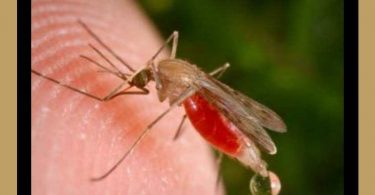Who remembers last month’s quiz? Here it is again for those of you who missed it. Then we’ll discuss the answer. I’ll tell you what I’ll do, I’ll underline the key words in the case that led to the remedy.
*****
Elaine, I’d like to help you out today but I seem to be in a nose-dive!
Which is good, Kelly, because it leads us right into this month’s quiz!
It does? Are you waiting for me to crash so you can give Arnica?
No, Kelly, Nosebleeds! This month’s case is a nosebleed!
Wow, this IS exciting! Who do we have to thank for this?
Gabi.
This is especially momentous because of all the songs there are about noses!
Kelly, there are no songs about noses!
Don’t be ridiculous! What about, “Noses are red, my love, violets are bluuuuuuuuuue…..”
OK, bad example. What about, “Start spreadin’ the noooooze, I’m leavin’ today….!”
That’s NEWS, Kelly! “Spreadin’ the NEWS”! It’s “New York, New York”!
OK, OK, what about “Blowin’ in the Wind”?
Not your nose!
Well, what, then?
You’ll have to ask Bob Dylan! Look, Kelly, we’ll just let Gabi tell it.
Gabi in Canada, come on down!
Elaine, you’re coming in loud and clear! Well, here is my horrifying story!
Santiago, my son, had gone to the park with this brothers. He had been agitated all morning and I decided they needed to take him out. He was also “tired” so they pulled him in the wagon and parked him on the school grounds in the sun while they played soccer. Santi is four years old.
I was in the house when I heard Nico, his brother, screaming, “Mum, Santi has a nosebleed!” Rushing out, I tried not to panic which wasn’t easy since we had already dealt with Nico’s ITP (Idiopathic Thrombocytopenia Purpura, an autoimmune condition where the spleen attacks the platelets in the body therefore causing bleeding and bruising) so I had seen enough blood for one lifetime.
The first thing I noticed was that the bleeding was coming from the right nostril. It was profuse, coming on rapidly and getting brighter. My first reaction was to run inside the house to get a certain remedy in the 200C potency.
I left him with his dad while I did this and came back and tried to sit him in my lap so I could hold a tissue against his nose but he was squirming and agitated and kept saying, “Don’t touch me!” He was restless and visibly upset and scared.
He then tells me he was hot in the sun and I notice the concern for the bleeding on his part is worse while I am there. I notice he becomes agitated when I come back with the remedy and while I am with him.
So I gave him this remedy and I waited when I remembered his recent violent behaviour:
biting, rolling his head, sticking out his tongue, doing violent things towards others, kicking, dancing crazily whenever the radio was on and striking his brothers… yes, charming isn’t it?
So while I was waiting for this remedy to do something, I yelled to my daughter,
“Go get me the ___________30C!” (the only potency I had)
The blood kept coming out as if from a fountain.
He was refusing to take the 2nd remedy but after some coaxing he did. The bloody hankies were piling up…but about 20 seconds after the dose of __________30C, a big long clot the size of an earth worm started coming out the right nostril and the blood was less profuse. Santi then got up and started playing with his toys completely forgetting what had happened!
His dad said, “Santi sit down, you must rest.” His mood had changed, he was no longer scared. All was well again.
Another homeopathic victory!
——————————————–
So…when I hear: agitated, violent, restless and crazy dancing whenever the radio comes on, I think of Tarentula hispanica! (No, I am not spelling “Tarentula” wrong, this is Latin. All our remedies are in Latin. But later, when I talk about the spider itself, I will use the “Tarantula” spelling.) Almost everybody voted for Belladonna in this case, which is understandable because you do have the right-sidedness, the possible etiology of ailments from the sun, and Belladonna is listed under Desires to Dance and Wild Dancing. Belladonna can also be violent; so I can truly relate to the choice of this remedy.
However, under “Agitation”, Belladonna is only a 1 while Taren. is a 3. Also, while Belladonna may be listed under desires to dance, this trait is so characteristic of Tarentula that when you suspect Tarentula in a case, the first thing you want to ask is, “Is there an issue with dancing?” Because if there’s no issue with dancing, you really have to wonder if you have the right remedy, that’s how characteristic the desire to dance is for Tarentula. I must have prescribed Belladonna a hundred times and never once have I encountered this symptom in a Belladonna case, not once.
Also, in Belladonna, what do we expect to find? We expect to find redness, heat and congestion. The “touch aggravates” aspect, or “doesn’t want to be touched” is more of a physical issue with Belladonna than a mental issue. Generals: touch agg.–Bell (3); Generals: slight touch agg.–Bell (3). It’s so painful for Belladonna to be touched–the congestion, the heat, the inflammation…they can’t bear it. Think of the average appendicitis case where the person cannot bear for their appendix area to be touched. Belladonna is a big remedy in appendicitis. They can’t bear to be jarred either, or even for the bed they’re lying in to be jarred, it’s so painful for them.
With Tarentula, it’s more of a mental trait among all the spiders–they do not want to be touched. Mind: touched, mental aversion to being–Taren (3). But here’s the symptom that tipped Gabi off: Tarentula feigns illness! You see, they want the attention, they want to be noticed, they have a great need for an audience! And one of their favorite ways of attracting an audience is to complain! Mind: pretends, to be sick–Taren (3). Remember when Gabi said that she noticed he seemed much more agitated when she was there with him than when she went into the house? And you’d think it would be just the other way around, that he would panic as soon as his mother left him during his time of need, that’s why this symptom is so important–because it’s peculiar! Congratulations to Gabi for remembering that Tarentula has this trait of exaggerating his illness in the presence of others.
Spiders are cunning and devious. Notice also that Gabi also says that the kids pulled him in the wagon because he claimed to be “tired”–she puts “tired” in quotes, implying it probably wasn’t true or that it was somehow suspect. Tarentulas are known to lie. Remember that whatever is most peculiar in a case has to be covered by the remedy. I remember thinking, “Since when does a 4 year old complain of being tired, what 4 year old has ever been tired?”
So, what I thought I would do right now is talk a little bit about the Tarentula child. Restlessness and agitation are worse in Tarentula than in any other remedy. It’s just constant. They have restless hands, restless fingers. They’re destructive. If you’ve got a restless child but no destructiveness? Think twice about Tarentula. They’ll wreck any room they’re in. Pick things up off the table and throw them or break them.
They can’t sit still and eat. They’ll take a bite and walk around and come back for another bite. If you make them sit down, they’ll start kicking their legs, they’ll play with whatever’s at the table–their napkin, the silverware or start drumming or tapping with their fingers. Also, like Veratrum, they can tear and cut things.
The Tarentula child doesn’t sleep well–restless, crying, agitated. They may fight going to sleep with all their might; but with the tarantula being the nocturnal hunter, this should come as no surprise. They may wake in the middle of the night crying and distressed.
Other children may refuse to play with the Tarentula child because he or she may tease them, be annoying, threaten them, hit them, scratch or bite them or pull their hair. These Tarentula children can be downright mean. On the other hand, they can be very affectionate, give you a nice big kiss, and then at the end scratch or bite you! You’ll be taken aback by such a sudden turn! But if you think of the actual tarantula, they sit in a hole in the ground, waiting for an insect to walk by and at just the right moment, the tarantula springs up and attacks and then just as suddenly is back in his hole again. So, look for evidence of this suddenness, sudden violence, in a Tarentula case.
Spider remedies like to hide–under the bed, in a corner, behind a chair–not too surprising when you think that the tarantula hides in a hole in the ground, and spiders are frequently found in corners.
Here are the issues to look for in a Tarentula child:
fear of noise
constipation
desire for salt
desire for vinegar (according to Massimo Mangialavori)
chilliness (since most children are warm, you may not find chilliness in all Tarentula children)
thirsty
minimal appetite
desires chocolate
quarrelsome/oppositional
annoying, teasing behavior
making threats
hitting, biting, scratching, hair-pulling
hitting themselves, hitting themselves in the head
complaining
oversensitivity
aversion to being touched
restless/hyperactive
agitation
devious, cunning
hiding
destructive
lying
hypochondrical
need to be noticed, need for attention
aversion to going to sleep
active at night
pretends to be sick/feigns illness to get attention
DESIRES TO DANCE
Now, the question is, who is our winner? Actually, no one guessed Tarentula, except…for one person: Gabi! Dr. B, I nominate Gabi as the winner of the September quiz! After all, if SHE hadn’t guessed Tarentula, what would have become of Santiago? What has Gabi won?
—————————————-
Your prize: Frank Sinatra, with “New York, New York”! Start spreadin’ the nooooooze……..
***************************
Elaine Lewis, D.Hom., C.Hom. Elaine takes online cases. Visit her website at elaineLewis.hpathy.com








